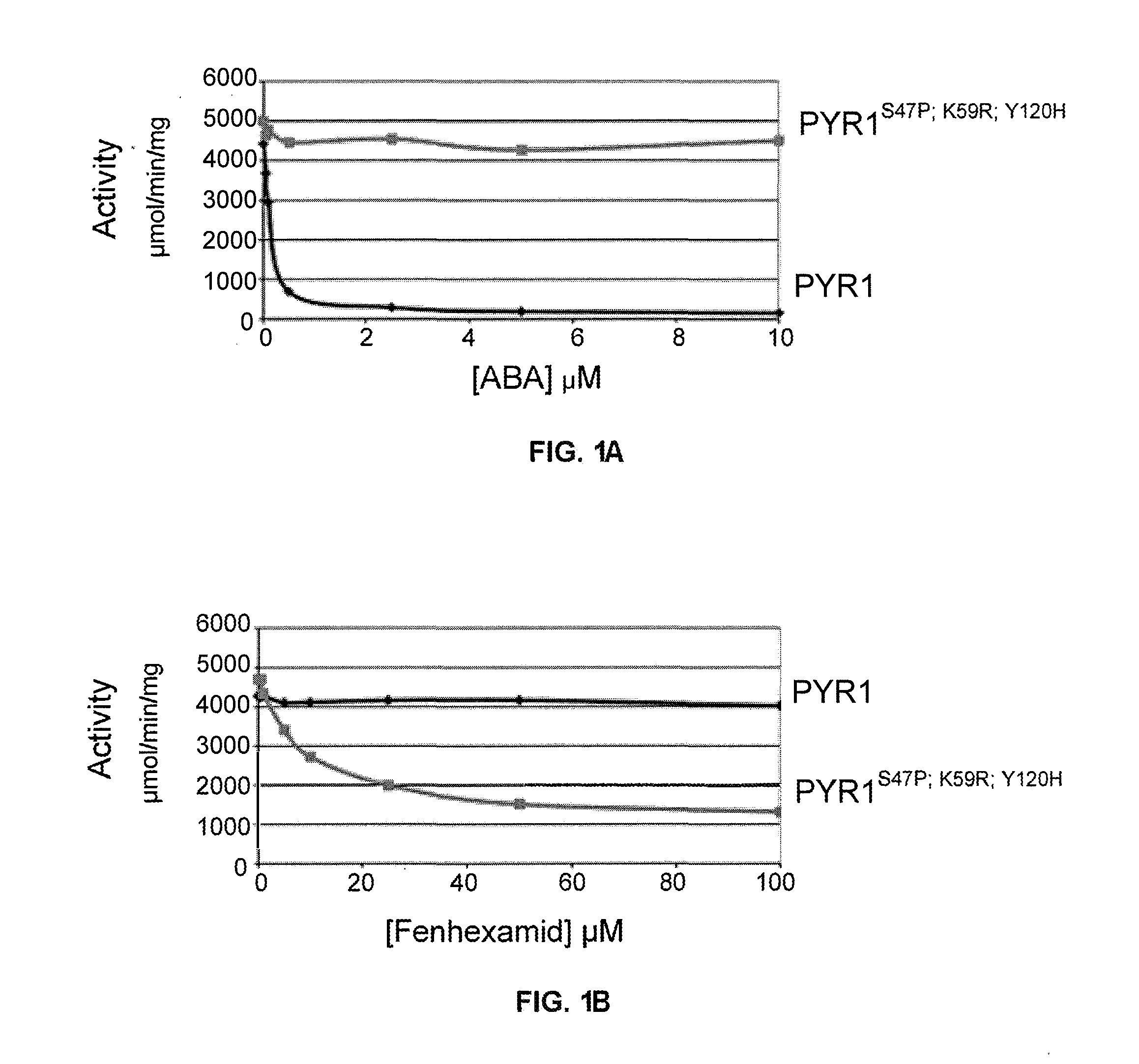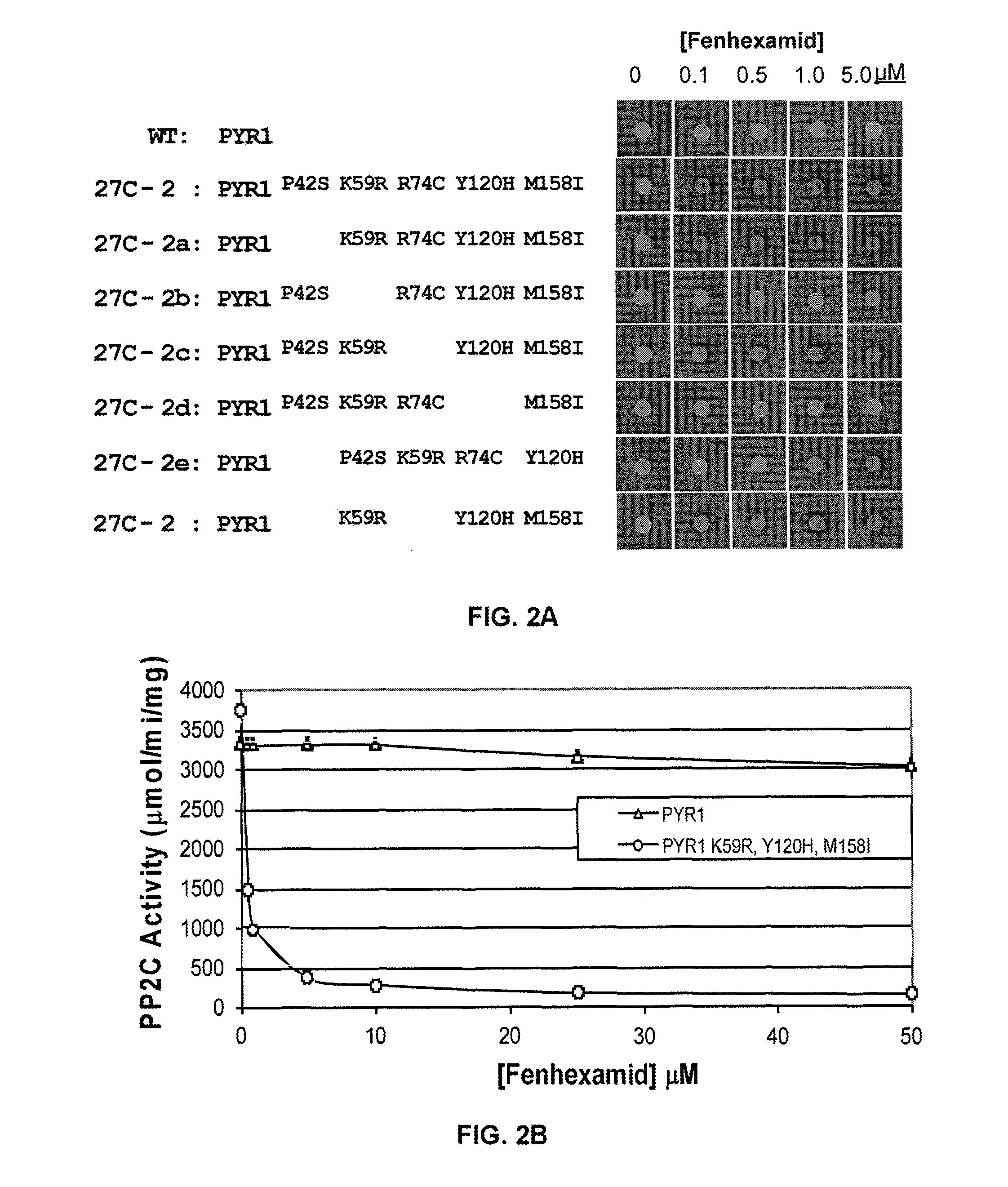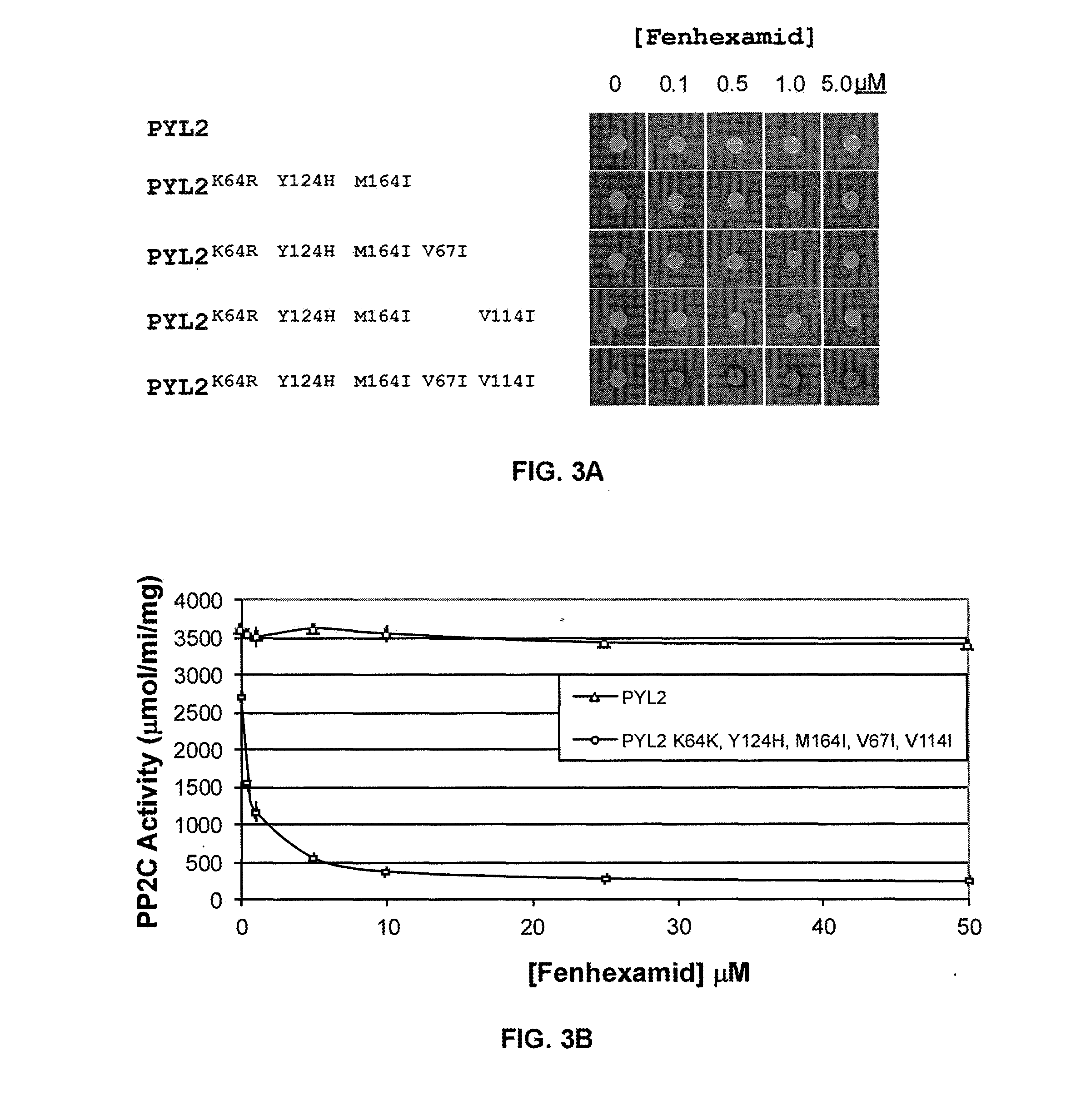Modified pyr/pyl receptors activated by orthogonal ligands
a technology of orthogonal ligands and receptors, which is applied in the direction of biocide, instruments, peptide sources, etc., can solve the problems of affecting the abiotic stress tolerance of peptides, and unable to successfully commercialize peptides for this purpose, etc., to achieve the effect of improving the abiotic stress toleran
- Summary
- Abstract
- Description
- Claims
- Application Information
AI Technical Summary
Benefits of technology
Problems solved by technology
Method used
Image
Examples
example 1
Isolation of PYR1 Orthogonal Receptors
[0315]For isolating mutated (orthogonal) PYR / PYL receptors, a suitable target ligand is first identified. Next, receptor mutagenesis and selection experiments are used to identify orthogonal receptors that respond to the target orthogonal ligand. In general, the higher the starting affinity of the target ligand for the receptor prior to mutagenesis, the fewer the number of mutations that will be needed to realize target recognition. Proteins with promiscuous ligand-binding pockets are inherently better starting points for engineering efforts than those with pockets that are highly selective, since they are likely to make weak contacts with a greater number of ligands than a highly selective binding pocket. Furthermore, a receptor protein whose function can be measured in a heterologous host such as S. cerevisiae is a preferred target for receptor engineering, because such assays allow large numbers of variant receptors to be screened rapidly.
Met...
example 2
Mutations at the K59 Position Sensitize PYR to Diverse Orthogonal Ligands
[0327]Inspection of the screening data in Tables 1-5 revealed that receptors containing a mutation at the K59 position were isolated at least once for all chemicals screened. In most cases, a K59R mutation was present in the majority of orthogonal receptors isolated for each chemical screened. This surprising observation suggests that K59 is a control point that can be targeted beneficially to engineer effective orthogonal receptors. Two plausible hypotheses for the frequent occurrence of a mutation at the position corresponding to amino acid K59 of PYR1 are the “brake” hypothesis and the “pocket shape” hypothesis. The brake hypothesis proposes that the K59 residue functions as part of a “braking” mechanism to help keep receptors in their “off” state in the absence of bound ABA; therefore, mutations at K59 may disrupt a control mechanism that keeps receptor activation linked to ABA binding and prevents receptor...
example 3
Improvement of Fenhexamid Receptor Sensitivity
Generating Fenexamid-Responsive PYR1 Variants
[0332]As detailed in Example 1, the screening of the ePCR1 mutant library for fenhexamid responsive mutants led to the isolation of several mutant PYR1 receptors that respond to fenhexamid (Table 1). To improve fenhexamid receptor sensitivity, DNA shuffling was employed using the same general experimental scheme outlined previously. Briefly, equimolar amounts of plasmid DNA for the fenhexamid receptors shown in Table 1 were pooled and combined with an equimolar amount of the ePCR1 library DNA. The pooled templates were utilized for DNA shuffling, which was conducted as described in Example 1. A library (named “27”) of ˜400,000 shuffled variants was prepared. The DNA for this library was introduced into the MAV99 pAD-HAB 1 yeast strain as described above and the resulting yeast cells collected and grown on FOA-containing plates to reduce constitutive mutants in the library, yielding the 27B′ li...
PUM
| Property | Measurement | Unit |
|---|---|---|
| time | aaaaa | aaaaa |
| abiotic stress tolerance | aaaaa | aaaaa |
| temperatures | aaaaa | aaaaa |
Abstract
Description
Claims
Application Information
 Login to View More
Login to View More - R&D
- Intellectual Property
- Life Sciences
- Materials
- Tech Scout
- Unparalleled Data Quality
- Higher Quality Content
- 60% Fewer Hallucinations
Browse by: Latest US Patents, China's latest patents, Technical Efficacy Thesaurus, Application Domain, Technology Topic, Popular Technical Reports.
© 2025 PatSnap. All rights reserved.Legal|Privacy policy|Modern Slavery Act Transparency Statement|Sitemap|About US| Contact US: help@patsnap.com



